Adaptive Data Center Resource Orchestrator (ADRO)
What is ADRO?
ADRO—short for Adaptive Data Center Resource Orchestrator—started as a bold question:
What if scaling compute wasn’t just for hyperscalers?
What if SMEs and smaller data centers could do it too—on their own terms?
Over a year ago, we were deep in DevOps work, constantly navigating the complexity of infrastructure orchestration. The gap was clear: while large enterprises could afford complex cloud-native setups, SMEs were still stuck with fragmented tools and slow provisioning cycles. We wanted to change that.
So we started designing a framework to bring cloud-like agility to smaller data centers—a way to decentralize compute, not just vertically (to the cloud) but horizontally (across smaller, sovereign infrastructure nodes).
ADRO was born from that vision. A unified control plane. Built on open standards. Designed to be simple, flexible, and built for the edge.
It never made it into execution back then. But the need hasn’t gone away. If anything, it’s grown louder. And maybe now… its time has come.
Here is the premise:
ADRO brings hyperscaler-grade agility and automation to on-premises and hybrid environments, allowing small and large infrastructure operators to manage resources with cloud-like velocity—without losing control.
Built on Kubernetes and Crossplane, ADRO creates a unified control plane to manage diverse infrastructure using descriptive models, declarative automation, and embedded governance. It’s vendor-neutral, open-source-aligned, and built for extensibility.
For CIOs and policymakers, this unlocks a new model of infrastructure operations—where compliance, cost-efficiency, and innovation aren’t trade-offs, but byproducts of smart orchestration.
The Data Center Challenge Today
Today’s enterprise infrastructure faces some recurring pain points:
Fragmentation: Tools and teams managing siloed infrastructure stacks increase operational friction.
Manual Workflows: Provisioning is inconsistent and error-prone, often requiring human intervention.
Slow Innovation: Development teams are slowed by bottlenecks in IT and resource approval loops.
Compliance Overhead: Ensuring policy enforcement across diverse environments is complex and costly.
Legacy tools like VMware vRealize or Cisco UCS Manager weren’t built with Kubernetes-first, declarative operations in mind.
They solve parts of the problem—but not at the scale, simplicity, or agility modern teams require.
The ADRO Vision: Cloud Agility, On-Prem Control
Core Idea: Imagine managing your physical and hybrid infrastructure the same way you manage containers in Kubernetes: declaratively, with continuous reconciliation, automation, and policy baked in.
That’s the essence of ADRO.
ADRO = Kubernetes + Crossplane
Provider abstraction layer
Self-service portal
Observability & governance built-in
It enables small data centers and enterprises alike to provision, monitor, and scale infrastructure using infrastructure-as-code, without the heavy lift traditionally required.
What This Enables?
Core Components of ADRO
1. Unified Control Plane
ADRO leverages the Kubernetes API as the central interface for managing infrastructure. It uses CRDs (Custom Resource Definitions) to define any infrastructure component—databases, VMs, networks—as a first-class resource.
2. Declarative Resource Models
With ADRO, infrastructure is declared—not scripted.
Here’s an example of a developer-friendly CRD to provision a Postgres instance:
apiVersion: database.example.org/v1alpha1
kind: PostgreSQLInstance
metadata:
name: analytics-db
spec:
parameters:
storageGB: 20
version: "13"
highAvailability: true
providerConfigRef:
name: onprem-datacenter-providerAnd here’s a Crossplane Composition that maps abstract resource definitions to actual infrastructure implementations:
apiVersion: apiextensions.crossplane.io/v1
kind: Composition
metadata:
name: composable-postgres
spec:
compositeTypeRef:
apiVersion: database.example.org/v1alpha1
kind: PostgreSQLInstance
resources:
- name: db-instance
base:
apiVersion: database.gcp.crossplane.io/v1beta1
kind: CloudSQLInstance
spec:
storageGB: 20
region: us-central1
patches:
- fromFieldPath: "spec.parameters.storageGB"
toFieldPath: "spec.forProvider.settings.dataDiskSizeGb"3. Continuous Reconciliation
OCAR Lifecycle Pseudocode
ADRO uses Kubernetes controllers to implement the OCAR loop: Observe → Compare → Act → Report.
def reconcile(resource):
actual = observe(resource)
if actual != resource.spec:
result = act(resource.spec, actual)
report(result, resource.status)This keeps your infrastructure aligned to declared state—automatically, continuously, and reliably.
4. Provider Plugins
ADRO connects to a wide range of infrastructure through Crossplane providers. These plugins abstract vendor APIs and allow you to manage:
5. Observability & Policy Enforcement
ADRO integrates with tools like Prometheus and Grafana for monitoring, and Kyverno or OPA for policy enforcement.
Here’s a Kyverno policy that ensures databases are provisioned with a minimum storage limit:
apiVersion: kyverno.io/v1
kind: ClusterPolicy
metadata:
name: enforce-storage-minimum
spec:
validationFailureAction: enforce
rules:
- name: check-min-storage
match:
resources:
kinds:
- PostgreSQLInstance
validate:
message: "Storage must be >= 10GB"
pattern:
spec:
parameters:
storageGB: ">10"Outcomes of ADRO Implementation
🔧 Cost & Efficiency
30–50% reduction in manual provisioning effort
Smarter resource usage via autoscaling and policy-driven control
🚀 Agility & Innovation
Developers provision environments in minutes
Experimentation without fear of compliance violations
🔐 Compliance & Security
Guardrails built into provisioning
Audit logs via GitOps and version-controlled infra-as-code
🌐 Strategic Flexibility
Multi-cloud and hybrid ready
Built on open standards to avoid future vendor lock-in
Sample Use Case Table
Practical Cases & Companies that adopted similar models:
🏢 Netflix
Reduced provisioning time by over 80%
Consolidated multiple infrastructure tools into a unified internal control plane
🧪 Spotify
Enabled over 30 developers with compliant, self-service infrastructure
Significantly reduced infrastructure bottlenecks and dependency delays- Reduced infrastructure dependency delays significantly
Forward Vision
Final Word: Choose Control and Agility
The cloud taught us to move fast. But ADRO shows us we don’t need to give up control to do it.
You can bring hyperscaler-level automation and experience into your own data center—without reinventing the wheel, or sacrificing your sovereignty.
ADRO is that bridge. Let’s make it real.



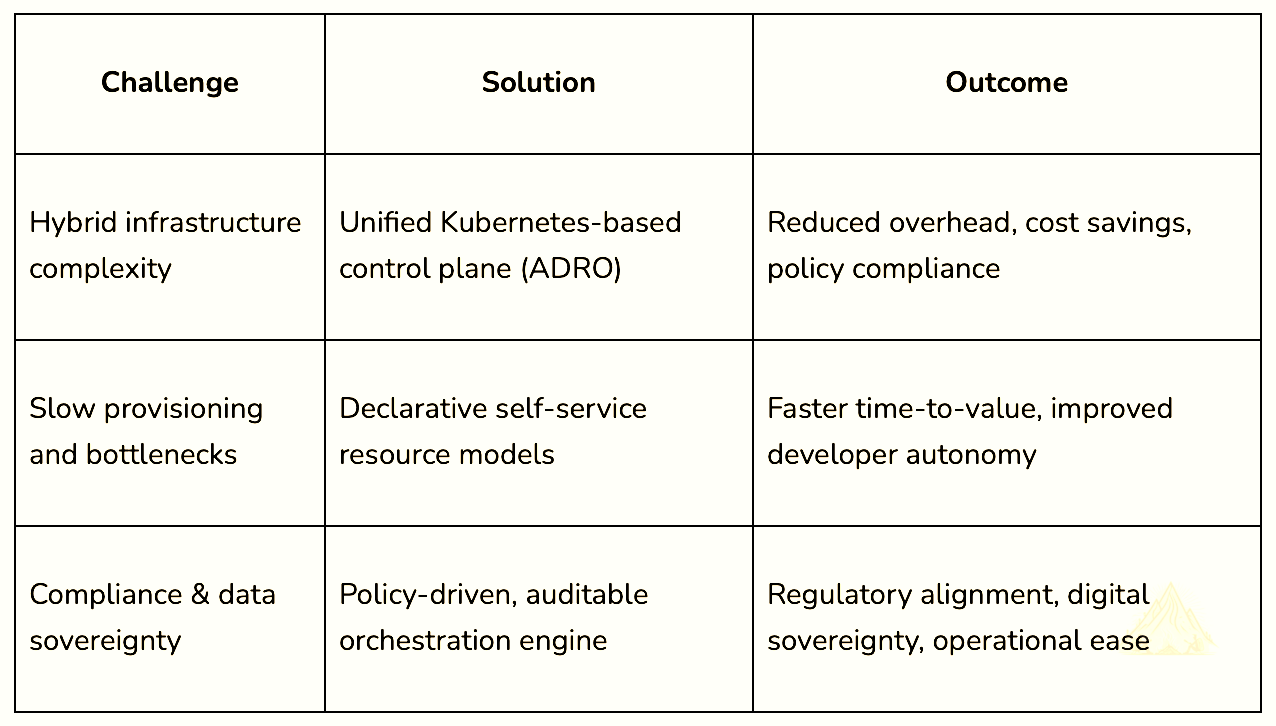
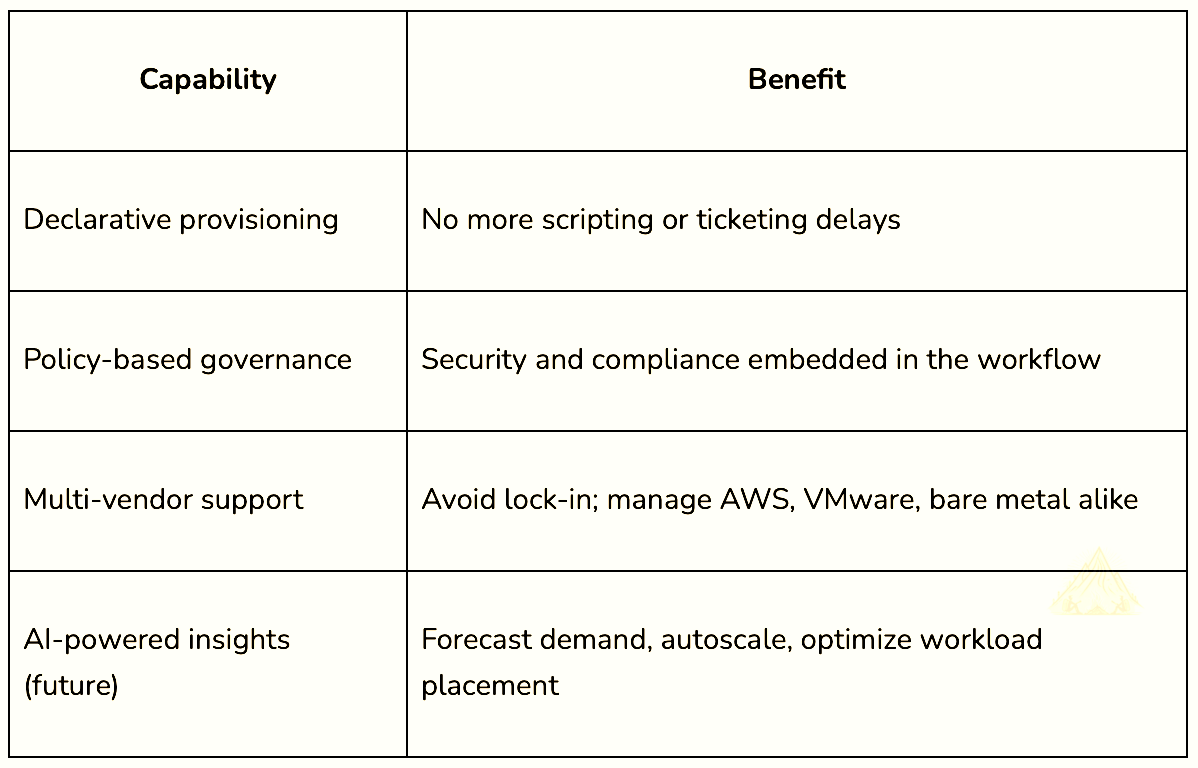
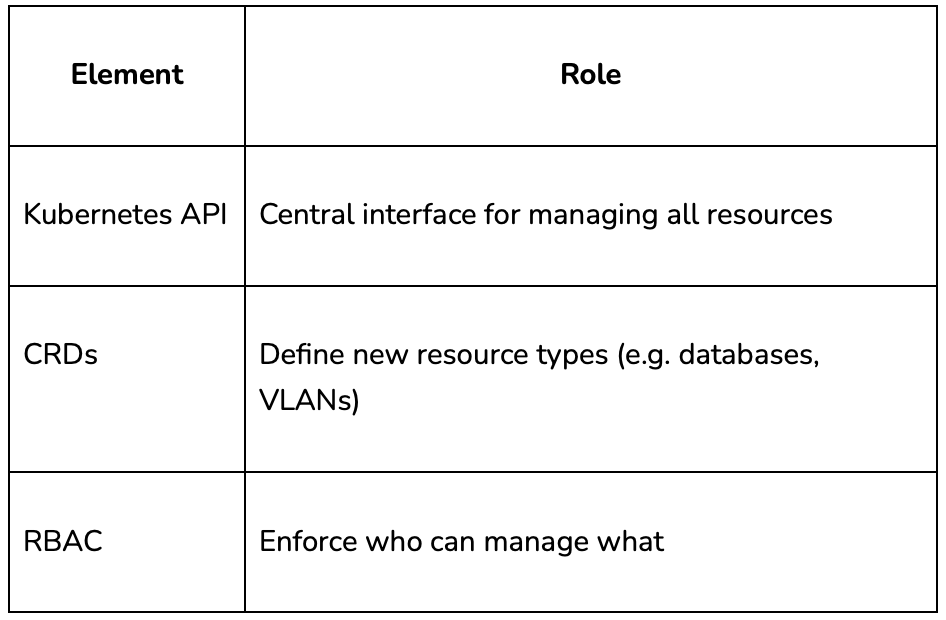
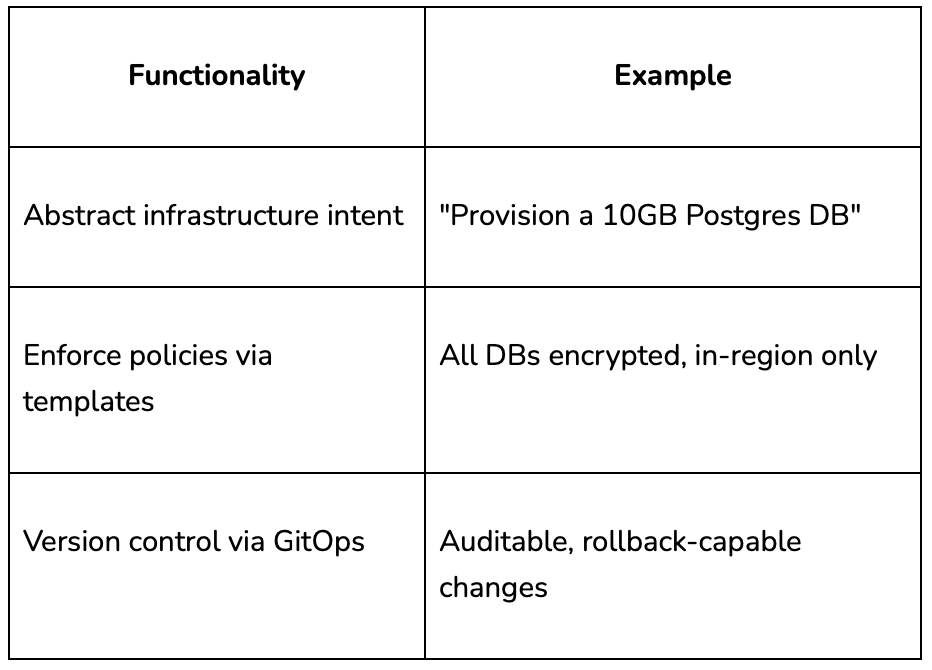
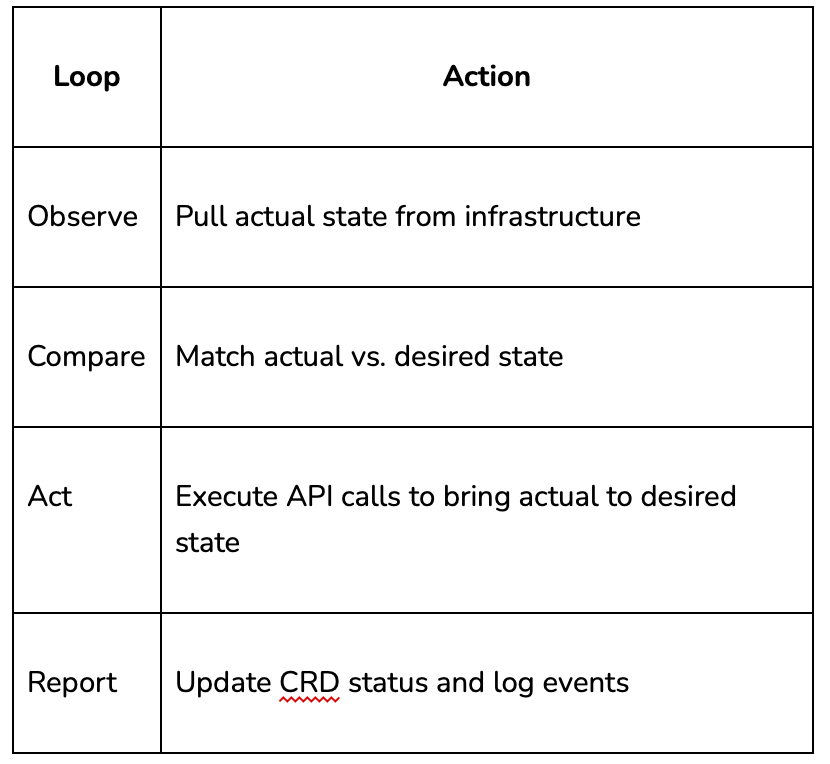
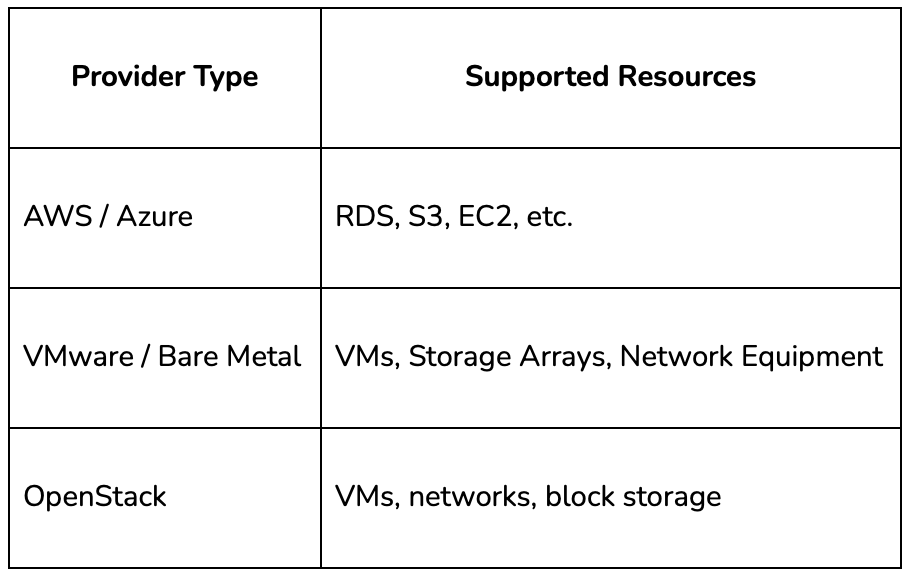
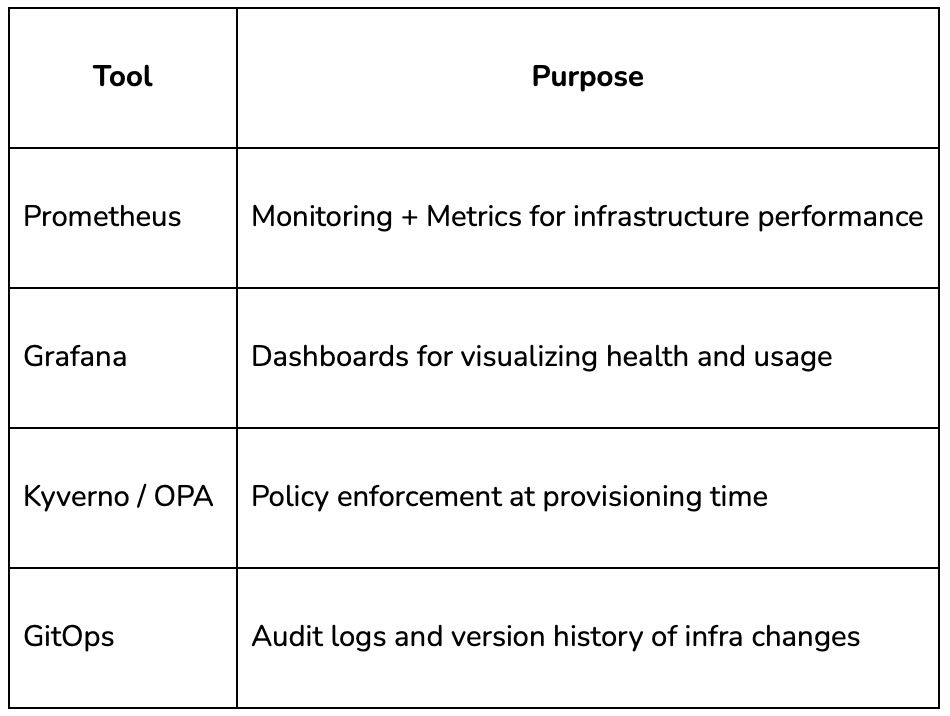
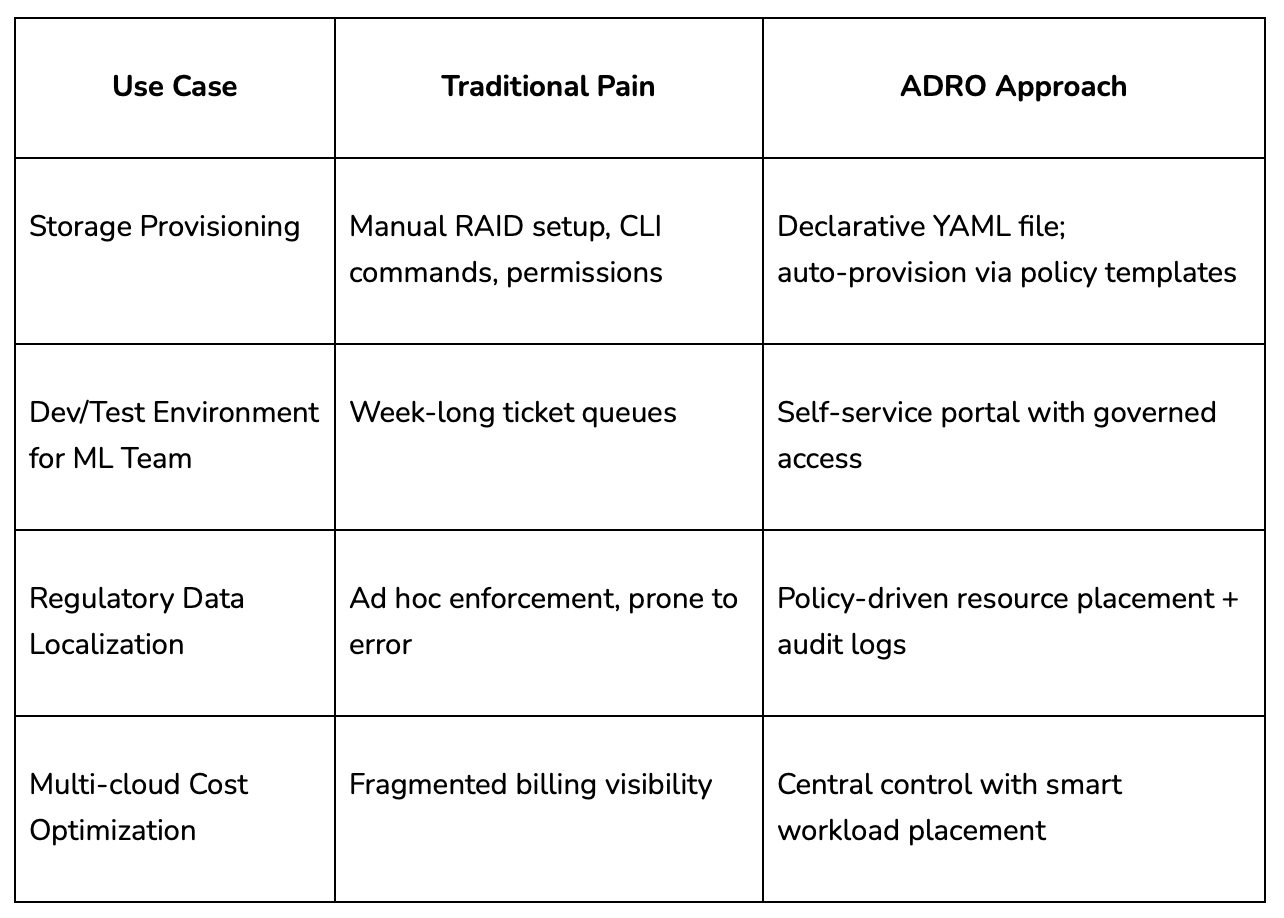
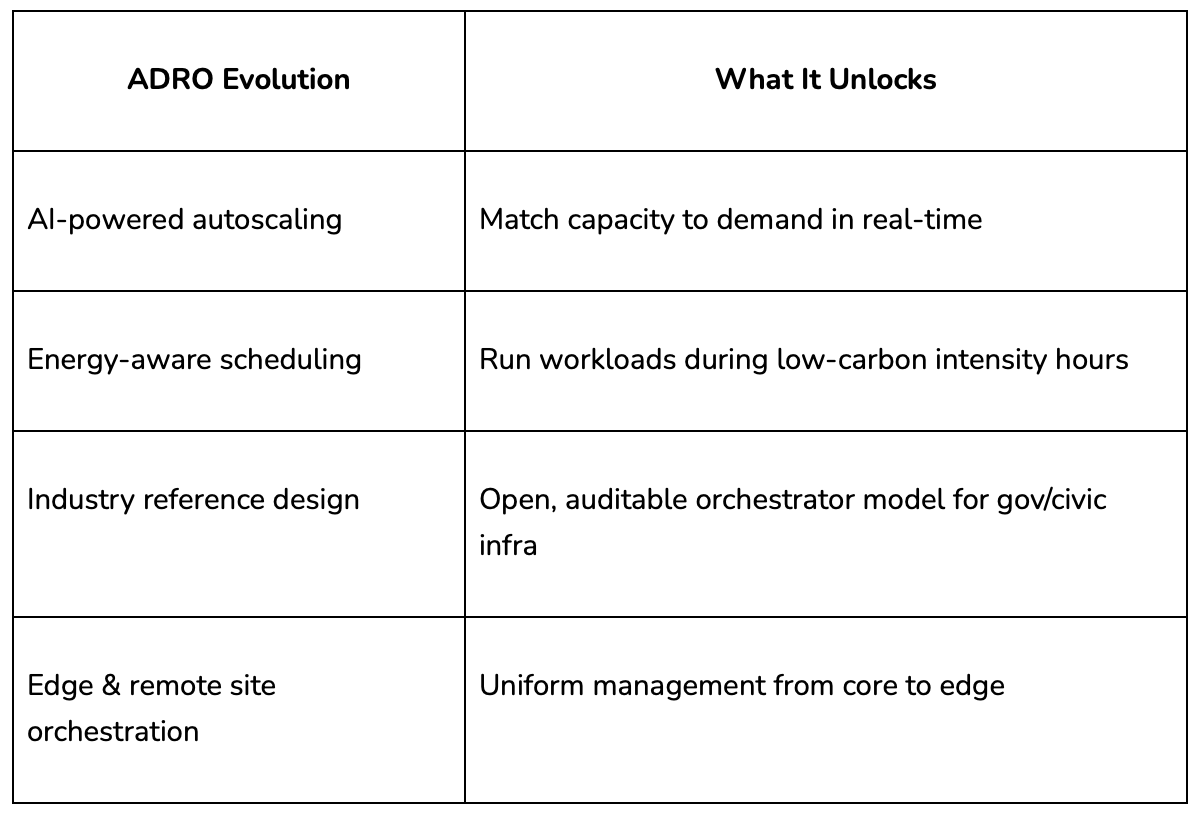
Super interesting stuff!